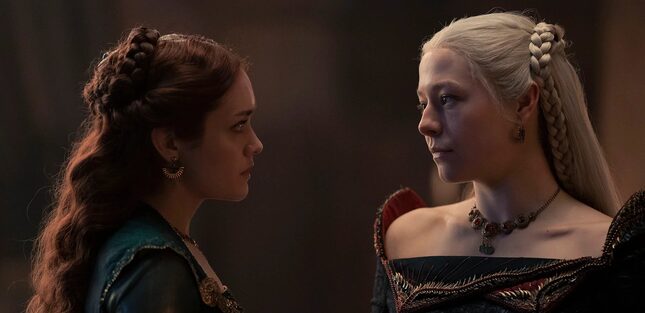Has the ‘Game of Thrones’ Franchise Learned Anything About Portraying Rape?
The showrunner of upcoming prequel series House of the Dragons confirms it will continue to depict sexual violence, despite criticisms of the original.
EntertainmentTV

For whatever reason, Game of Thrones, an epic fantasy series that (allegedly) ran from 2011 to 2019, is returning with a spin-off prequel series called House of the Dragon, set to begin streaming on HBO next month. This series will follow the dramatic and presumably very violent years of the incestuous, madness-prone, dragon-taming Targaryen dynasty—the ancestors of the original show’s Daenerys Targaryen and Jon Snow.
Because it seems old habits die hard, in a new interview with The Hollywood Reporter, writer and showrunner Miguel Sapochnik confirmed that like Game of Thrones, House of the Dragon will also feature (probably quite a bit of) sexual violence. Per the interview:
“Sexual assault is still very much part of the world. Sapochnik says the duo’s approach is done ‘carefully, thoughtfully and [we] don’t shy away from it. If anything, we’re going to shine a light on that aspect. You can’t ignore the violence that was perpetrated on women by men in that time. It shouldn’t be downplayed and it shouldn’t be glorified.’”
House of the Dragon has yet to premiere, meaning we have only these comments and the storied history of gender-based violence-related controversies attached to Game of Thrones. But Bridget Todd, a spokesperson for the women’s rights organization Ultraviolet, has concerns. “I really invite the writers to ask themselves why they feel sexual violence is necessary to ‘accurately’ depict that specific time and ‘history,’ but not other things, in a clearly fictionalized universe,” Todd told Jezebel. To Todd’s point, Sapochnik notably said House of the Dragon will “pull back” on the famed sex scenes from its predecessor, while continuing its depictions of sexual violence—despite many criticisms of Game of Thrones for rare-to-nonexistent portrayals of female pleasure and male nudity, in contrast with frequent sexual assaults and notoriously rampant female nudity.
Todd added, “Prestige shows like GoT have always really relied on sexual violence to move a plot along, in ways that have desensitized viewers to the actual gravity and seriousness of sexual violence.” This, she says, is particularly frustrating, because given how mainstream epic fantasy is often catered to male audiences—a problem in itself—it’s a “missed opportunity” to educate said male audiences about the gravity and devastating toll of sexual violence.
-

-

-

-

-

-

-

-

-

-

-

-

-

-

-

-

-

-

-

-

-

-

-

-

-

-

-

-

-

-

-

-

-

-

-

-

-

-

-

-








































